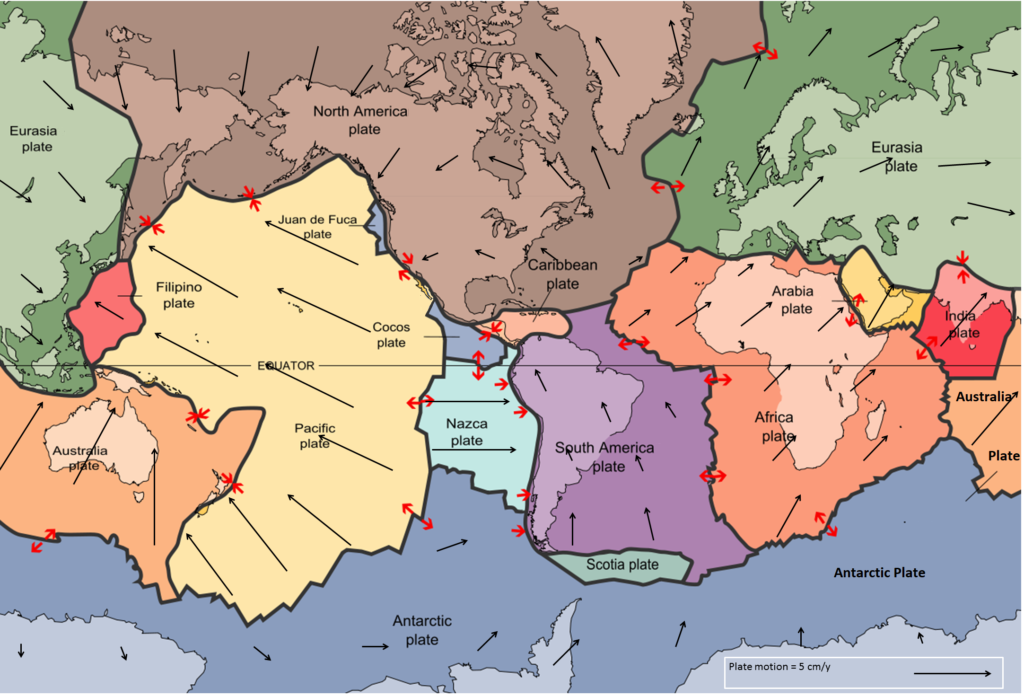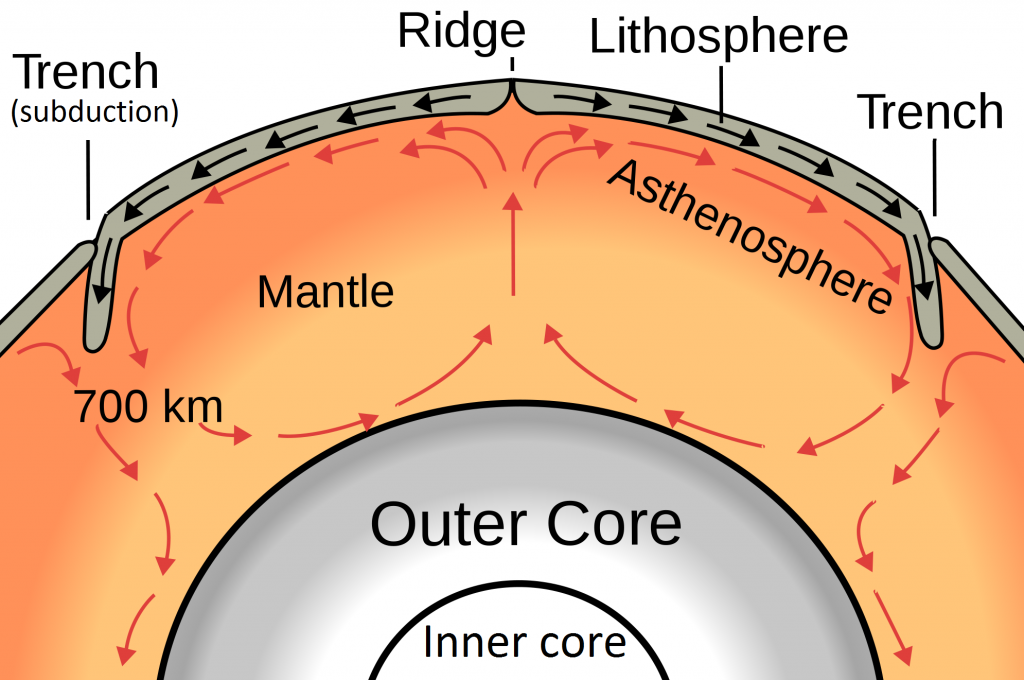15 1.5 Fundamentals of Plate Tectonics — Physical Geology – 2nd Edition

Key to understanding plate tectonics is an understanding of Earth’s internal structure, which is illustrated in Figure 1.5.1. Earth’s core consists mostly of iron. The outer core is hot enough for the iron to be liquid. The inner core—although even hotter—is under so much pressure that it is solid. The mantle is made up of iron and magnesium silicate minerals. The bulk of the mantle surrounding the outer core is solid rock, but is plastic enough to be able to flow slowly. The outermost part of the mantle is rigid. The crust—composed mostly of granite on the continents and mostly of basalt beneath the oceans—is also rigid. The crust and outermost rigid mantle together make up the lithosphere. The lithosphere is divided into about 20 tectonic plates that move in different directions on Earth’s surface.
An important property of Earth (and other planets) is that the temperature increases with depth, from close to 0°C at the surface to about 7000°C at the centre of the core. In the crust, the rate of temperature increase is about 30°C every kilometre. This is known as the geothermal gradient.
Heat is continuously flowing outward from Earth’s interior, and the transfer of heat from the core to the mantle causes convection in the mantle (Figure 1.5.2). This convection is the primary driving force for the movement of tectonic plates. At places where convection currents in the mantle are moving upward, new lithosphere forms (at ocean ridges), and the plates move apart (diverge). Where two plates are converging (and the convective flow is downward), one plate will be subducted (pushed down) into the mantle beneath the other. Many of Earth’s major earthquakes and volcanoes are associated with convergent boundaries.
Earth’s major tectonic plates and the directions and rates at which they are diverging at sea-floor ridges, are shown in Figure 1.5.3.
Using either a map of the tectonic plates from the Internet or Figure 1.5.3 determine which tectonic plate you are on right now, approximately how fast it is moving, and in what direction. How far has that plate moved relative to Earth’s core since you were born?

See Appendix 3 for Exercise 1.2 answers.
Media Attributions
- Figure 1.5.1: © Steven Earle. CC BY.
- Figure 1.5.2: Oceanic Spreading by Surachit. Public domain.
- Figure 1.5.3: Tectonic Plates by USGS. Public domain. Adapted by Steven Earle.
<!– pb_fixme –>
<!– pb_fixme –>


